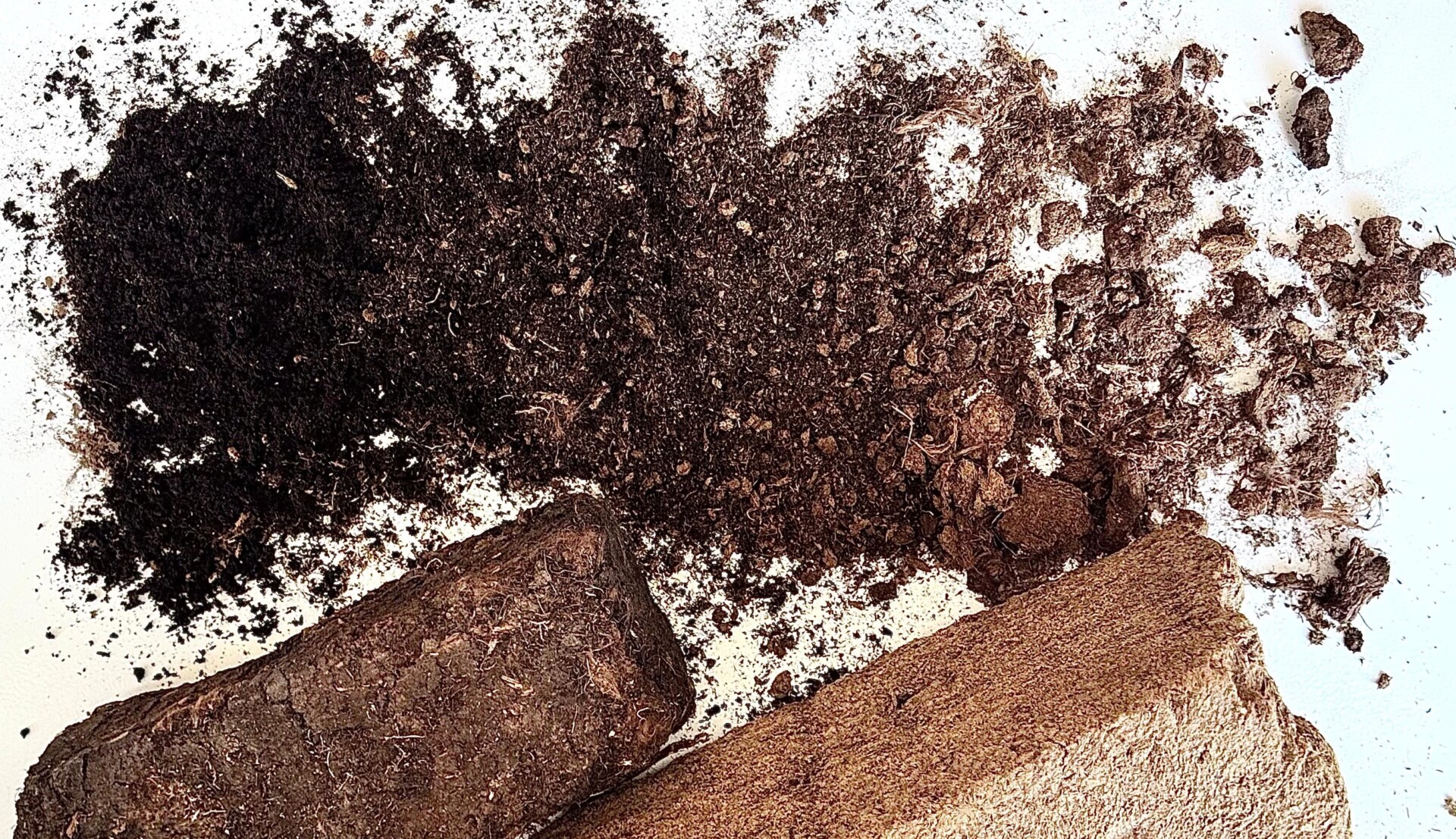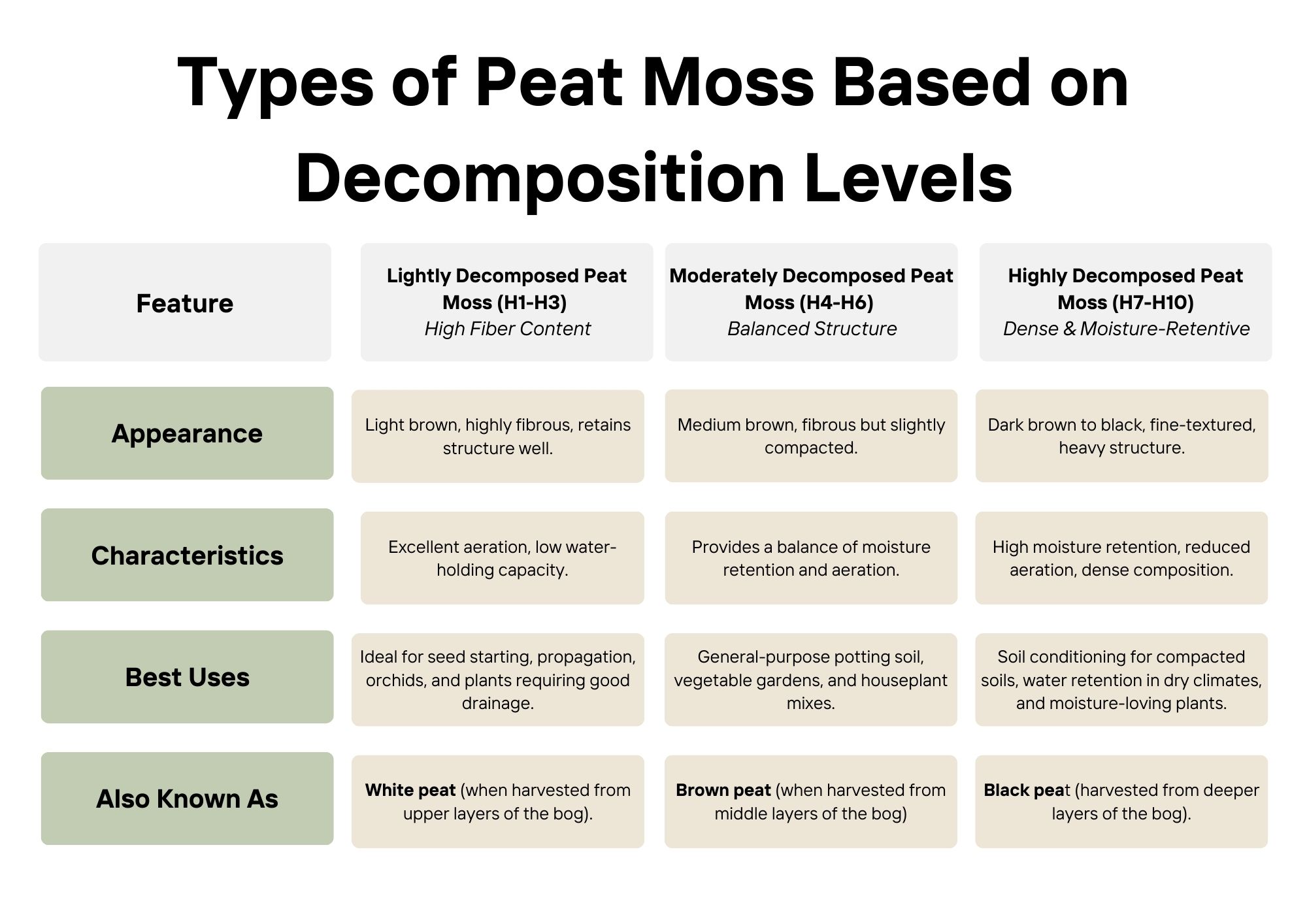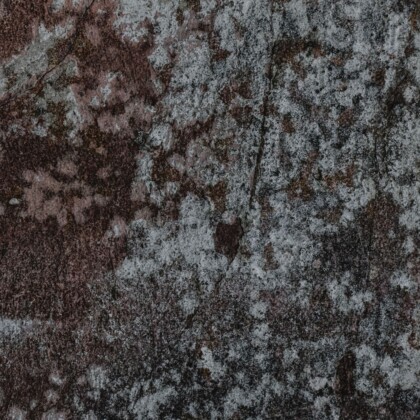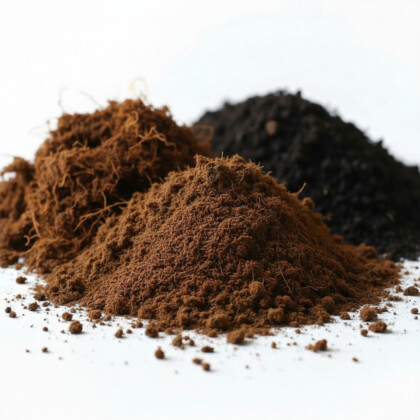

Peat moss is a popular soil used for different plant types as a main media or soil amendment and is very valuable for its beneficial properties as water retention or aeration. However, very important factor is its decomposition levels, which can change the game and make a great impact on how it functions in different growing media. It can be crucial to understand these decomposition levels whilst choosing the right media for your plants, because the right choice will ensure optimal plant health, root development and soil structure.
In this post we’ll discuss decomposition stages of a peat moss and help you to select the best option for your specific gardening needs. To learn more about peat moss characteristics you can also visit our About Peat Moss page. Or select the products you need in Our Products page
What Are Peat Moss Decomposition Levels?
Peat moss decomposes naturally over time, transitioning from a fibrous organic material to a finer, more compact form. This process influences its water-holding capacity, aeration, and suitability for different plants.
Categorizing decomposition levels:
One widely used classification system is the Von Post Scale, which categorizes peat moss from H1 (almost fresh, undecomposed) to H10 (completely decomposed, black, and dense).
Additionally, peat moss is often categorized into white peat (less decomposed) and black peat (more decomposed). White peat is typically harvested from the upper layers of peat bogs, providing a light, fibrous structure with excellent aeration properties, while black peat, found in deeper layers, is denser, with higher water retention and nutrient content. The difference is important: white peat is mainly used for improving soil air flow in gardening, while black peat is better for holding moisture and enriching the soil.

Key Differences Between White and Black Peat
Structure & Composition: White peat is light, fibrous, and contains more undecomposed organic material, making it ideal for aeration. Black peat is denser, richer in humic acids, and better suited for moisture retention and soil improvement.
Nutrient Content: Black peat contains higher levels of humified organic matter, making it beneficial for long-term soil enrichment, while white peat is better suited for short-term plant growth improvements.
Water Retention: White peat has lower water retention but offers better aeration, whereas black peat retains significantly more moisture, which is helpful in dry climates or water-sensitive plants.
pH Levels: White peat is more acidic (pH 3.5-4.5), making it suitable for acid-loving plants. Black peat, with a slightly higher pH (closer to 5.0-6.0), is often neutralized before use in agriculture.
Best Peat Moss Choices for Different Plant Media
Seed Starting & Propagation
Seed Starting & Propagation
Choose lightly decomposed peat (H1-H3) for its aeration properties, allowing delicate roots to develop without suffocation.
Potting Soil for Houseplants
Potting Soil for Houseplants
Moderately decomposed peat (H4-H6) provides an ideal balance of moisture retention and airflow.
Vegetable Gardens
Vegetable Gardens
A mix of moderately and highly decomposed peat (H4-H7) supports healthy root development while retaining moisture for crops.
Succulents & Orchids
Succulents & Orchids
Use lightly decomposed peat (H1-H3) with perlite or bark to prevent overwatering.
Moisture-Loving Plants (e.g., Ferns, Carnivorous Plants)
Moisture-Loving Plants (e.g., Ferns, Carnivorous Plants)
Opt for highly decomposed peat (H7-H10) to maintain consistent soil moisture.
Soil Improvement & Water Retention
Soil Improvement & Water Retention
Black peat is particularly effective for heavy or sandy soils, enhancing moisture retention and organic matter content.
Learn more in our blog post Why and How to Add Peat Moss to Your Soil: Benefits and Steps
How to Identify and Select the Right Peat Moss
Check the Color & Texture
Lighter, fibrous peat = less decomposed (white peat); dark, fine-textured peat = more decomposed (black peat).
Read Product Labels
Many peat moss products indicate their intended use, making selection easier.
Mix with Other Amendments
Combine peat moss with perlite, sand, or compost for a customized soil blend tailored to your plants’ needs.
Consider the pH Level
White peat is typically more acidic (pH 3.5-4.5), while black peat has a slightly higher pH (closer to 5.0-6.0), affecting how it interacts with different plant types.
Conclusion
Understanding peat moss decomposition levels helps gardeners to choose the best option for their plants.
Whether you need well-draining, aerated soil for seedlings or moisture-retentive peat for water-loving plants, selecting the right type of peat moss—white peat for aeration or black peat for moisture retention—will enhance plant growth and soil health.
Knowing the differences between white and black peat ensures the best choice for horticulture, agriculture, and sustainable soil management.


